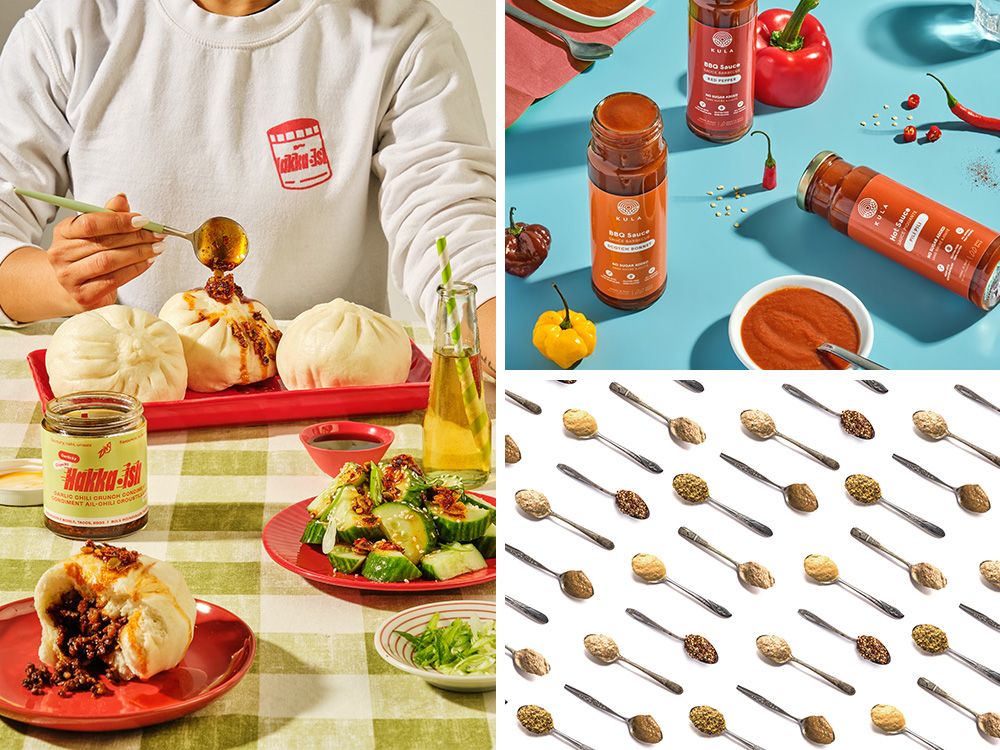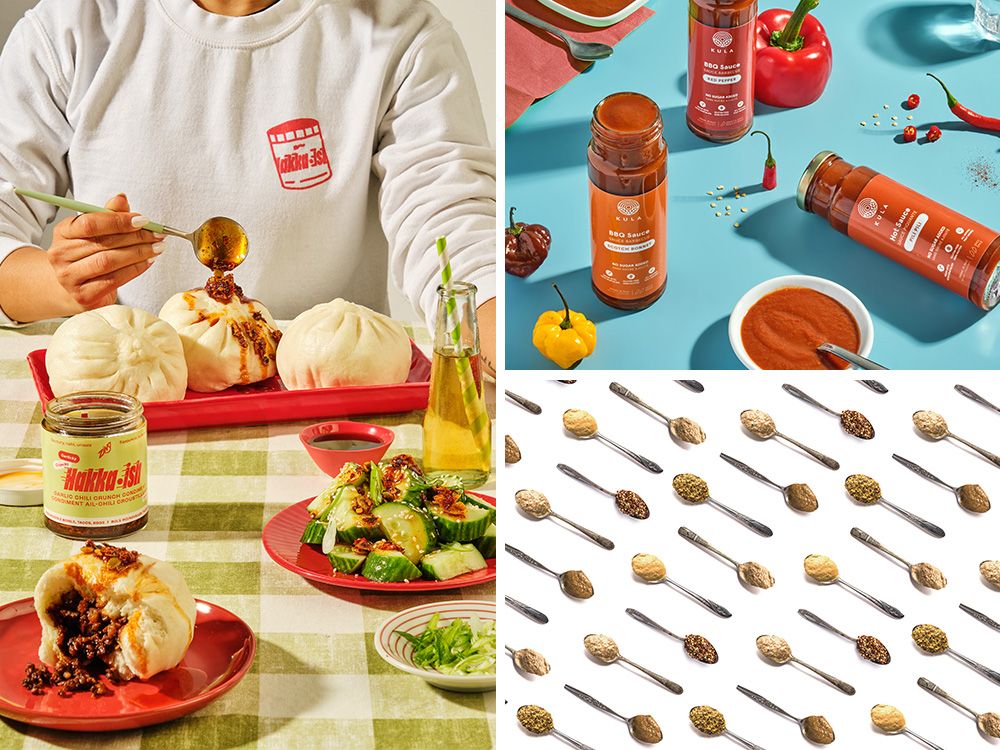
The “Buy Canadian” movement is stronger than ever. Seven in ten seek homegrown products when they shop (68 per cent, up five points from February), and more than half look at labels to avoid items made in the United States, according to a
poll.
Proving that shopping local is no sacrifice, from innovative ways to slash sugar and sodium to time-honoured traditions, these six Canadian condiment companies make meals more delicious.
One of them is a dramatic example of how the “Buy Canadian” movement can change the trajectory of a small business overnight. Most have experienced a boost in sales and are finding grocery buyers more receptive because of the rise of patriotic consumerism. All are available Canada-wide at retailers or via their websites.
The condiment market is growing. With customers increasingly seeking out “
,” it’s only expected to expand.
A dab of mustard, a dash of hot sauce or a drizzle of chili oil can make the difference between a ho-hum meal and a phenomenal one. These producers reflect the diversity of Canada’s communities, whether expressing their heritage through flavour or creating something wholly new from homegrown ingredients.
“I’m loving how Canadians are recognizing all of the things that are available in our home,” says Asha Wheeldon, founder and CEO of Vancouver’s
. “We have so many brands. We have so much richness of ingredients grown in Alberta, in B.C., and across Canada that we have access to.”
AKI’S FINE FOODS
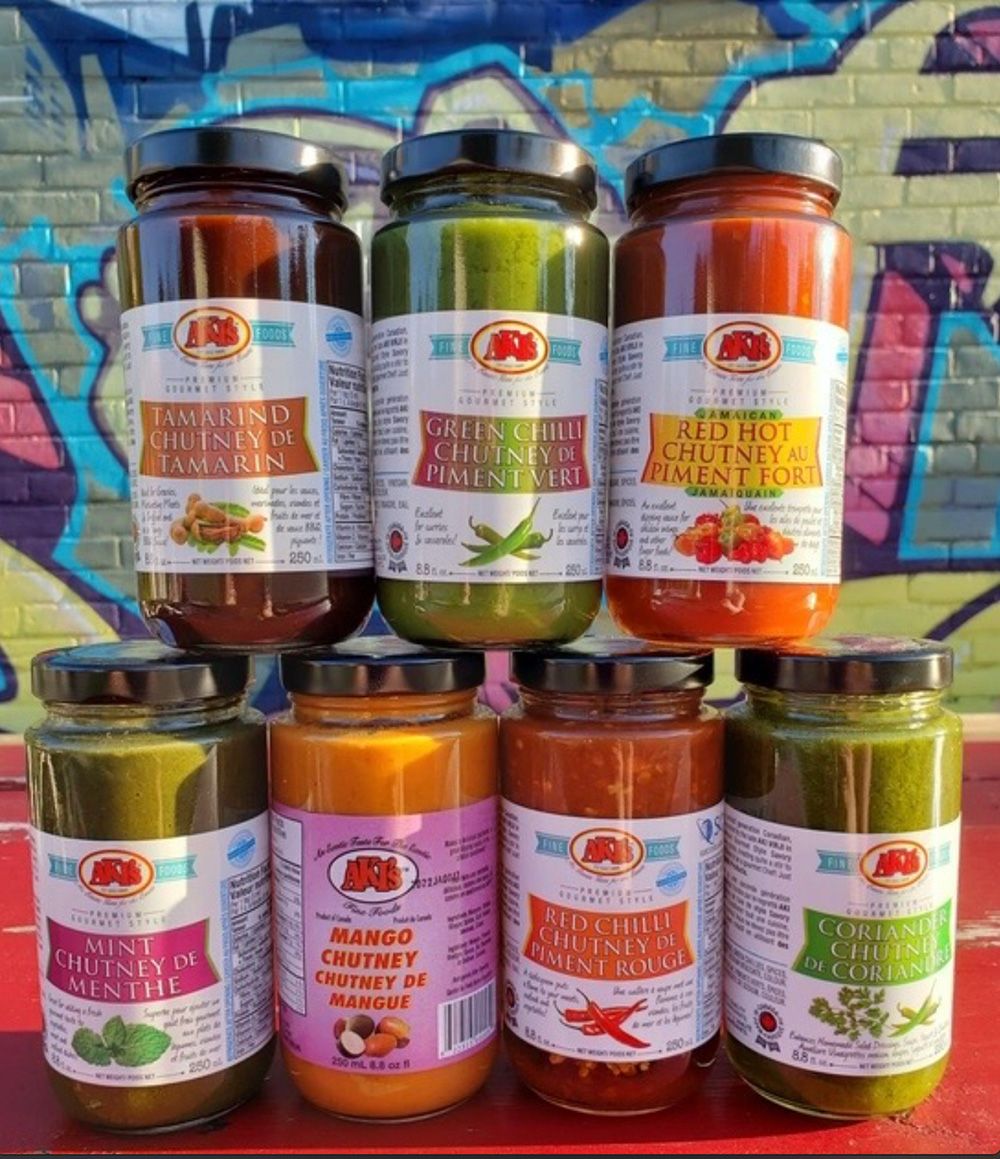
From
to
to
, many food and drink businesses have seen an uptick in sales since the “Buy Canadian” movement started gaining momentum in February. What Shenul Williams’s condiment business,
, experienced was more than a mere boost — it was a tsunami.
In March, Williams talked to her family about possibly having to close her Pickering, Ont.-based company. “I was just venting,” Williams recalls. “(I said), ‘We can’t take another whip like we took through COVID, and these tariffs are going to kill us. We can’t survive.”
Her daughter, Aliza Welch, took action. Unbeknownst to Williams, Welch posted about Aki’s Fine Foods on a “Buy Canadian”
. The post went viral, and online sales are up 6,000 per cent.
“She’s my hero. She’s been there for me, thick and thin,” Williams says of Welch.
“My mom has been operating via word of mouth for 38 years, and until I made that post, that’s the only real social media presence this company has had,” says Welch, laughing. “That’s how you know her sauces are good because she’s been in business for this long.”
At first, they were concerned that the surge of interest in Aki’s Indo-African condiments, including pickles, chutneys and barbecue marinades, would fade, but it hasn’t. People across Canada are placing orders — with customers in British Columbia, Newfoundland and Ontario showing the most enthusiasm — and Williams hand-writes a thank-you card to each one.
“The way Canadians have been rallying behind my mom has been unlike anything I’ve ever seen before — and how they continue to rally behind my mom,” says Welch, now Aki’s marketing and outreach director (on top of her job in health care). “We just cannot thank them enough.”
Williams’s parents, the late Aki and Daulat Virji, founded the company in 1986. After Aki got cancer in 1989, Williams became CEO. “A young kid on the block and taking over, it was really hard, especially not knowing anything about the business,” she says. “It was a very rough time, but I think (the sentimental value) kept me going all these years. We’ve had ups and downs, but that’s what made me survive.”
Originally from Tanzania, Williams’s products reflect her East African birthplace and Indian heritage. “With the Indian fusion, they’re really, really robust flavour,” she says. Welch sees the longevity of Aki’s Fine Foods as a sign that Canadians want condiments that taste like “someone’s auntie” made them, using fresh ingredients in small batches.
Aki’s medium-hot Coriander Chutney is a top seller, and Welch likes to put it on everything from avocado toast to eggs. (She recommends the Red Hot Jamaican Chutney for heat lovers.) Mango Chutney, Chili Ginger Pickle, and Garlic and Ginger Paste are also popular. In 2024, Aki’s Zanzibar Spice BBQ Marinade was named the best sauce at Vancouver’s
Grocery and Specialty Food West
trade show.
Since Welch’s post, Aki’s has secured a national distributor, and stores that stocked some products want to include a broader range. Other major and independent retailers have also expressed interest, which Welch says is the direct result of thousands of customers requesting Aki’s condiments.
“I don’t think I realized before all of this how much of an impact we had as individual Canadians and buyers of products. People tell you, ‘Be aware of how you spend your money. It makes a difference.’ And until seeing how this influenced my mom, I didn’t realize how much power we had,” says Welch.
Williams adds: “My life changed overnight.”
LA BRASSERIE SAN-Ô
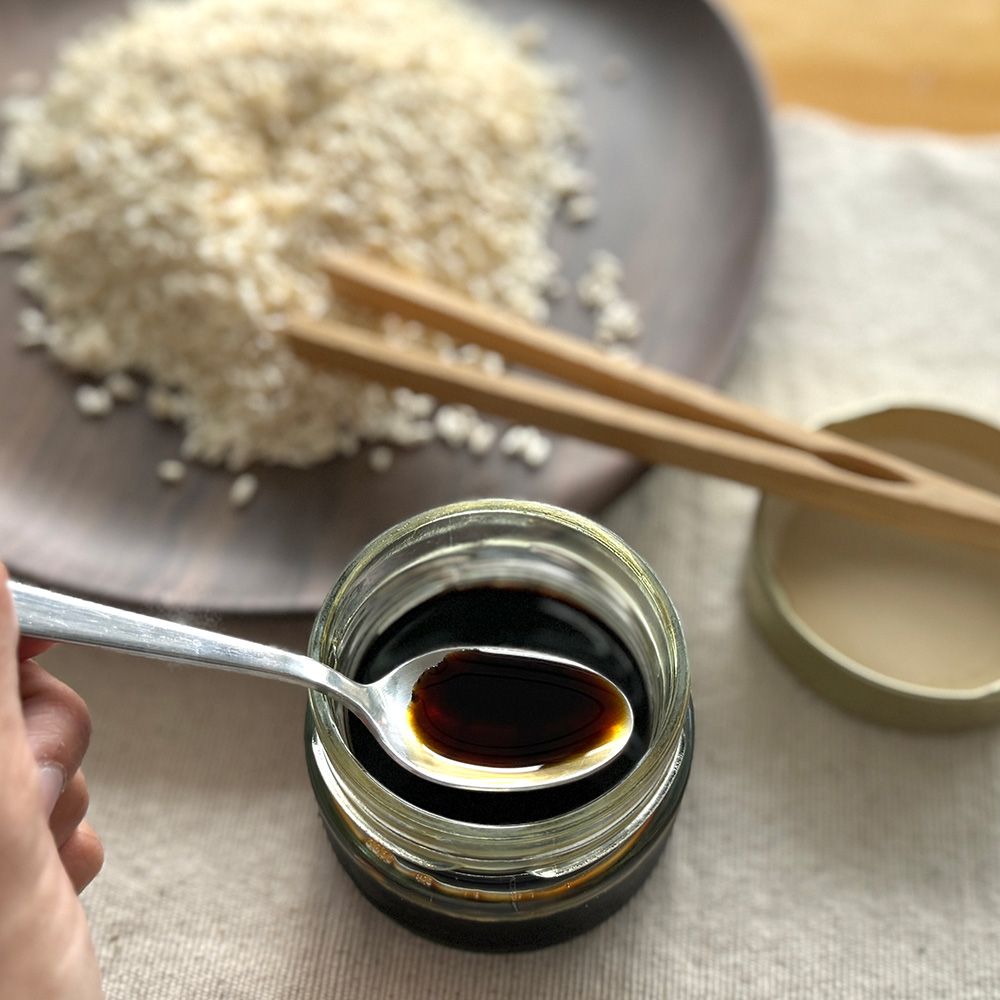
Using only koji, rice, water, hazelnuts, cocoa and sea salt, Montreal’s
makes a chocolate spread that will leave you asking, “Nutella who?” Its no-sugar-added, dairy-free
won the silver
at SIAL Canada in April, North America’s largest food innovation trade show. It stood out among 170 applications from 13 countries “as an indulgent but better-for-you spread.”
Husband-and-wife team Noriko Suzuki and Yota Suzuki founded the company in 2021 (formerly known as Koji Soupe & Labo) with restaurateur Masum Rahman, owner of
, where they started production before moving to a dedicated fermentation lab.
Yota was a sake brewer in the Suzukis’ native Japan. The couple was familiar with amazake (“sweet sake”) — the first step of sake-making embraced as a naturally sweet, low-alcohol or non-alcoholic drink in its own right — and aimed for more concentrated sweetness. Noriko began using it as a sugar alternative. Then, her thoughts turned to breakfast. “What if we can use amazake as a chocolate spread?”
It all started with koji. “This is a really magic ingredient to enhance umami in any kind of cuisine,” says Noriko, president of La Brasserie San-Ô.
Koji, grain (such as rice or barley) inoculated with the mould Aspergillus oryzae, is “the heart of Japanese fermentation.” It lays the foundation for many condiments, such as miso, mirin, soy sauce and pickles. Though the Suzukis knew about koji,
, the legendary Copenhagen restaurant, inspired them to experiment beyond traditional uses.
(David Zilber, the former head of Noma’s fermentation lab and co-author of
The Noma Guide to Fermentation
, and current director Kevin Jeung are
.)
“We try many, many new products. When I show the products to Japanese soy sauce companies or miso companies, they say, ‘Oh, this is not miso.’ ‘But this is not soy sauce.’ Noma opened our eyes,” says Noriko.
In addition to its cocoa spread, La Brasserie San-Ô makes artisanal condiments such as richly flavoured
and mellow
misos and
and
, which Noriko recommends using in salads or as a marinade for proteins to enhance umami and tenderness. She highlights that only seven per cent of the soybeans used to make Japanese miso are domestic — most are grown in countries like Canada, shipped to Japan and then sent back in miso form. At La Brasserie San-Ô, they use Quebec soybeans, making their misos a wholly local product.
When they started the business, koji was lesser-known. Today, word is spreading. Most of their customers are chefs in cities such as Montreal, Quebec City and Ottawa, which Noriko credits to Noma’s influence. “Even chefs who said at that time, ‘We don’t use koji because we’re a French restaurant,’ are getting back (in touch, saying), ‘Maybe we can use your products,’” she says, laughing.
The Suzukis enjoy experimenting with koji to create new condiments, such as an upcycled coffee teriyaki sauce fermented using spent espresso grounds and koji, vegan oyster sauce, ketchup and Indian seasonings.
“We’re really having fun incorporating new types of dishes with Japanese condiments. When I was in Japan, we only used these condiments to cook Japanese food, but since we came here, we’ve found many global ingredients to incorporate with koji condiments. So, I want to explain and expand this interesting field to the Canadian market,” says Noriko. “It’s such a good journey for us as well. The story started when we immigrated to this country. That really opened our horizons.”
ZING PANTRY SHORTCUTS
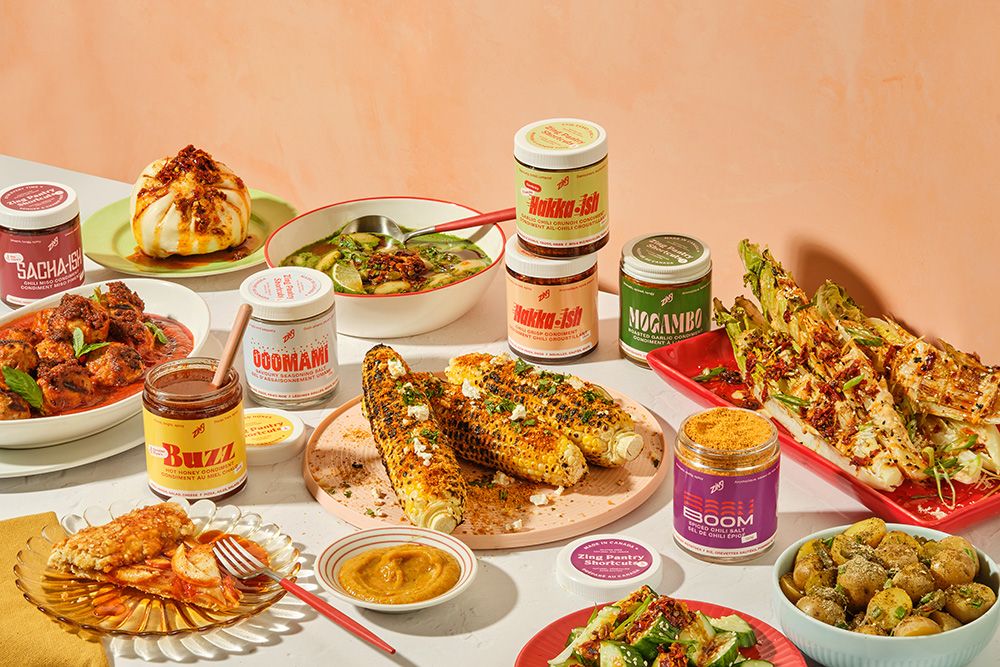
In 2020, as people across Canada found themselves managing three meals a day within four walls, Jannine Rane and Anush Sachdeva were also in the throes of the “what’s for dinner” dilemma.
“We really were just trying to figure out a way where we could have that variety, which is the reality of how most people eat today. (It’s) based on wanting a mix of cultures, wanting that convenience, but then also the reality of what’s in the fridge at 6:23 on a Tuesday,” says Rane, co-founder and CEO of
in Toronto.
The average Canadian knows
, she adds, which is in stark contrast to our growing appetite for global flavours. According to
, Korean, Japanese, Filipino and Thai cuisines are driving 24 per cent growth in the multicultural food category.
“How we want to eat and how we eat — there was no real overlap there. So that was the pain point. How do we eat what we want without having to spend hours in the kitchen? And the inspiration was really restaurants,” says Rane. “How does a restaurant get a plate of dinner from the kitchen to your table in 20 minutes? The secret sauce is the secret sauce, quite literally.”
Rane and Sachdeva co-founded Zing with their friend Kiran Singh, a chef, to bottle sauces that brought flavour “without compromising on quality or health. And doing it in a way that is also an homage to Canada and reflects the communities we live in.”
Over the past five years, they’ve partnered with Canadian chefs and food creators to develop a range of condiments, including Vincent Ng’s
, Pay Chen’s
Sacha-ish Chili Miso Condiment
and Christine Flynn’s
.
They make their products in a Mississauga facility and manage all aspects of the business in-house. Rane says that Zing built its business with independent grocers, small boutiques and coffee shops willing to take a chance on something new. It’s now available at more than 700 retailers nationwide, including Metro, Whole Foods Market and Fortinos.
Zing’s top seller is one of its original products,
. It’s been so popular that there’s now a
version. In 2020, Zing was one of a handful of companies in Canada making chili crisp. People often asked Rane what it was — but no longer, which she sees as evidence of how much more frequently people seek out these flavours.
According to
Agriculture and Agri-Food Canada
, chili sauces, such as chili crisp, are seeing the greatest growth in the “cooking and table sauce” segment, the largest sauce category.
Many people have advised Zing to move its operations to the United States, but Rane has resisted each time. She says running a Canadian small business in a consolidated industry and an uncertain economy isn’t easy, but her absolute belief in their work keeps her going.
“We took a leap of faith,” says Rane. “There was no one doing what we were doing at the time. We’re that example for folks that are starting now. So, I hope it’s the beginning of a wave of more Canadians being excited and proud of what we have to offer and just doing it — because I think we can and should.”
KULA FOODS
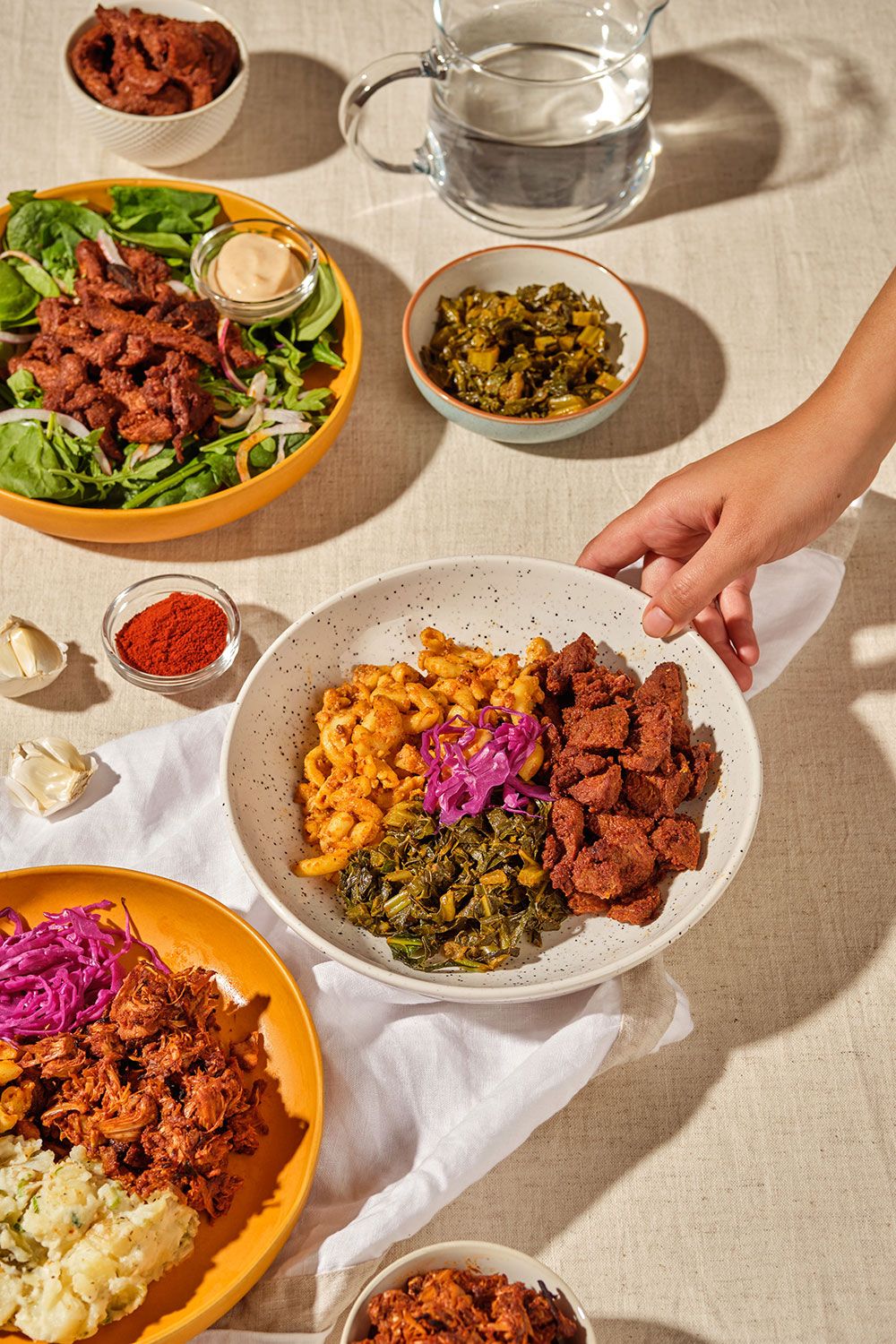
As a self-described “flavour hunter,” the condiment category is a natural place for Asha Wheeldon to be. Since founding
in Vancouver in 2018, she’s continually innovated. Raised in Toronto, Wheeldon launched the company to provide a taste of the regional African and Caribbean cuisines she missed from her hometown in plant-based proteins and condiments:
and
barbecue sauces and the warmly spiced, Kenyan-inspired
hot sauce.
In 2021, KULA reformulated its sauces to remove all added sugar. “We wanted to create sauces that didn’t have so much sugar content in there, thinking about health needs for someone who has diabetes or is just looking to reduce sugar intake, but also to be able to achieve the flavour in their foods,” says Wheeldon.
After testing various options, KULA landed on
(a natural no-calorie sweetener). It partnered with Summerland, B.C.-based food tech company
, which developed a patented process using grape pomace (a byproduct of wine production), tapping into the fruit’s polyphenols and fibres.
“They turn that into a full fermentation process technology that essentially uses grapes as an enhancer, and it takes away any (monk fruit) aftertaste,” says Wheeldon. “Working with them has really enhanced our sauces. Further to that, we’ve also been able to reduce our sodium and get the best texture possible.”
Local sourcing has been a priority since the beginning, and as a certified
, KULA measures the distance of the suppliers they work with. “Most of them are women. They’re diverse communities. They’re within an 80-kilometre radius. I’m really behind that message of, ‘Let’s support each other.’”
KULA is adding to its condiment line this summer with seasonings, such as Ethiopian berbere, Kenyan-inspired pili pili spice (which they’ve sampled as a hot chocolate beverage) and a curry blend highlighting Caribbean flavours — all without sodium. Working with Vancouver-based
, KULA is infusing its seasonings with mycelium (the root structure of mushrooms).
“It’s going to have oyster mushroom roots that add benefits to activate fibre, potassium and so much more,” says Wheeldon.
Reformulating KULA’s sauces sprung from Wheeldon challenging the conventional use of sugar. A two-tablespoon serving of standard barbecue sauce can easily contain more than 30 per cent of the daily value of added sugars. “Why? That’s dessert,” she says, laughing. Similarly, Wheeldon envisioned seasonings without sodium. Working with friend Karen McAthy, Maia Farms’ director of food innovation, she arrived at adding functionality.
(drinks with health benefits, such as those enhanced with protein or vitamins) have become increasingly popular, but Wheeldon hadn’t seen many functional seasonings. Beyond the health aspect, she says they can bring more creativity into cooking. Mycelium is also a natural thickening agent and adds body to gravies, pastes, soups and stews.
“We use condiments in cooking, so why not add functionalities that will enhance our experience, whether it’s the properties of cooking or the health benefits? If you can add fibre to more of your stews, why not? What excites me most is it allows us to expand our market reach around the types of customers we get. It’s not just about veganism. It’s about flavour. It’s about health. It’s about experience in the kitchen. So, it does create more expansiveness.”
TORSHI
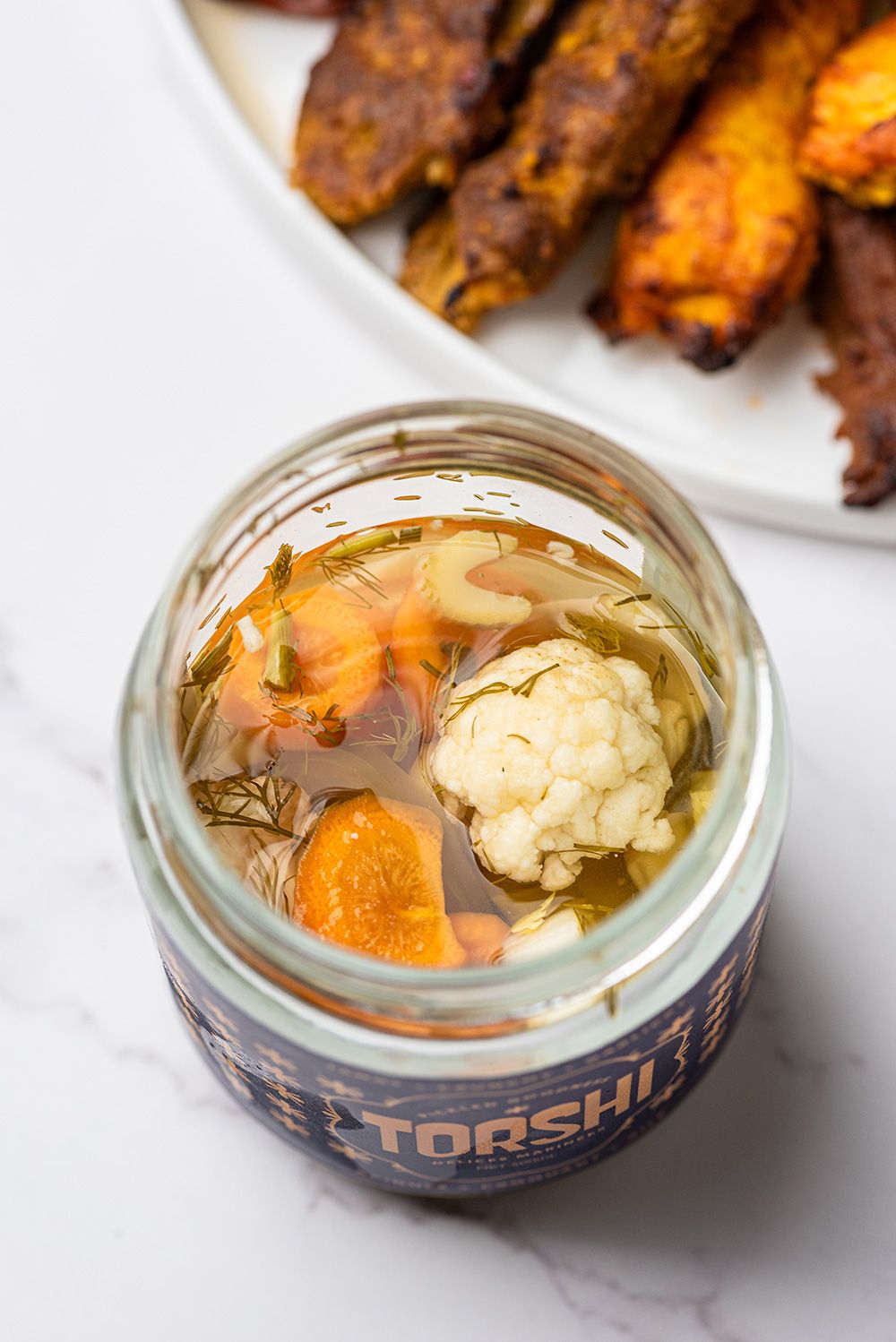
Ottawa-based
started with an experiment. Tech entrepreneur and co-founder Aydin Mirzaee knew his mom, Nasrin Eslamdoost, was onto something with her torshi (Persian-style pickled vegetables). Every Christmas, Eslamdoost would visit him from New York, where she worked as a geneticist, and make a batch of torshi meant to last the year. It never made it past February.
“It was so frustrating because I was like, ‘How do I get this?’ I would go to stores, and of course, there are Persian stores and things like that, but there’s nothing that tasted the same.”
Aydin put the idea of a business aside until Eslamdoost retired and returned to Ottawa. When he suggested that she and his dad, Saeid Mirzaee (who teaches international law part-time at the University of Ottawa), join him in starting a torshi company, Eslamdoost was skeptical. So, Aydin proposed they evaluate the pickles’ appeal on their non-Persian friends. The test wasn’t about whether they said they liked them but about whether they voluntarily ate more.
“Sure enough, we did this, and the reception was really good. People would go for seconds. They’d finish the whole thing,” Aydin recalls. In September 2023, they took their experiment to the
in Ottawa. On the first day, they sold 22 jars.
“All of us were like, ‘Holy. This is crazy. People actually bought it.’ We just kept not wanting to believe it,” says Aydin. They couched their success in the idea that farmers’ market customers are inclined to support local and waited to see if there would be repeat purchases. There were. When Aydin saw that the
domain was on auction, they took it as another sign that their Persian pickle company was meant to be.
“Slowly, my parents started to believe: ‘We can do this. We can be entrepreneurs,’” says Aydin, laughing. “I’ve been doing this entrepreneurial stuff my whole life, and so this is very natural to me, but for them, what I’m proud of is that, later on, they’re doing this thing.”
In 2024, Matin Moghaddam, who shares the co-founders’ love of torshi, joined full-time as the general manager. Torshi —
,
and
— is now stocked in
across Canada, but Aydin has his sights set on 1,000.
Crunchy and garlicky with the tang of an organic apple cider vinegar brine, their customers are putting torshi on charcuterie boards and in sandwiches and salads. Moghaddam says he used to think of torshi as an accompaniment, but seeing how people from other backgrounds are enjoying it, he appreciates its versatility. “Now there are more doors and opportunities that we can explore.”
Aydin and Moghaddam share the dream that, just like kimchi and hummus, one day, torshi will enter the Canadian lexicon. “This is not an embedded word within Canada,” says Aydin. “If you fast forward 10 years and everybody knows what torshi is, that would be crazy.”
Moghaddam adds: “That someone calls his wife and says, ‘Can you buy some torshi?’ and they understand each other’s language. And they won’t be like, ‘What’s that?’ That’s our vision.”
KOZLIK’S
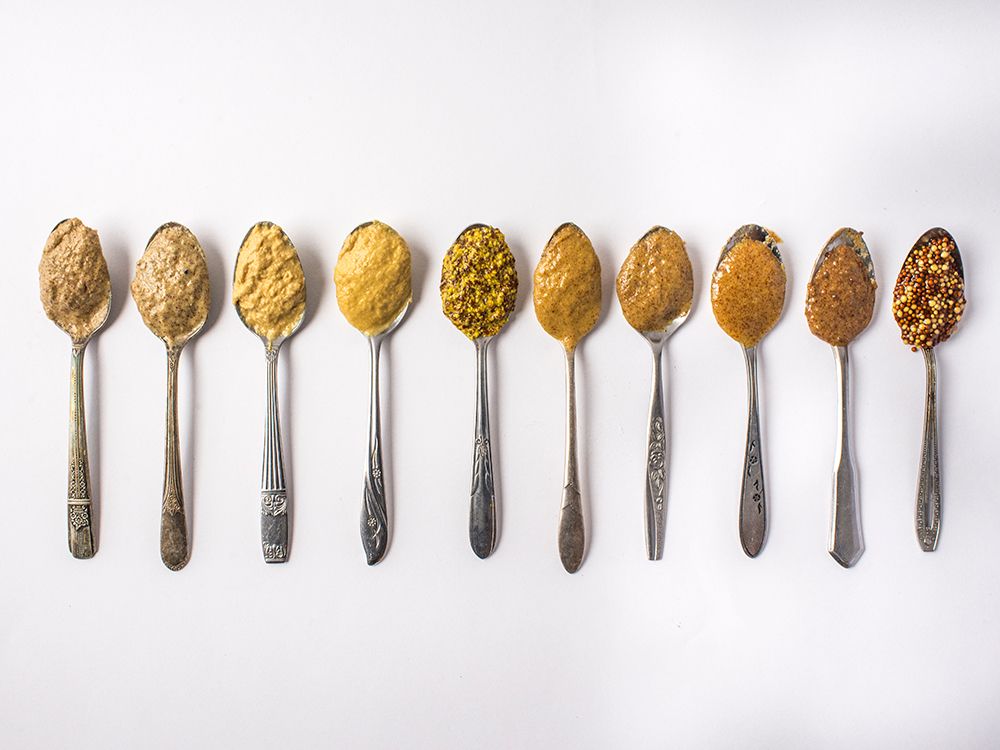
To many,
is more than a mustard — it’s their mustard. “I used to open the store at 5 a.m. with my father on the weekends, and people would come by with their group of friends, and they’d stop and say, ‘This is my mustard.’ And they’d really take ownership over that,” recalls Noah Kessler, director of business development and son of owner Jeremy Kessler.
Kozlik’s has been in the condiment game since 1948. Noah grew up participating in the business after his father bought it from late founder
in 2000. Initially, they made mustard on-site at Toronto’s
. One of Noah’s first jobs at 11 years old was cutting labels and adhering them to jars with a glue stick. His father is a former photographer, so the lines had to be perfectly straight.
Before they were in the mustard business, the Kesslers were Kozlik’s customers. Jeremy went down to the market one day — between jobs on the cusp of the digital era — and came home with a book of recipes. “Anton gave me a very good basic mustard education (he’d been making mustard for 50 years, so he knew a few things), and I seem to have a bit of a talent for it,” Jeremy told
in 2010.
Mustard is a classic condiment, and Kozlik’s is a time-honoured Canadian brand. One of Jeremy’s lessons that stuck with Noah is that incremental changes add up. “You may not notice the slight changes immediately, but when you look at it over time, they’re substantial.” With a background in economics, Noah believes running a profitable business and making products you feel good about is possible. Carefully sourcing glass, caps and labels helps safeguard profitability without sacrificing quality.
According to the
, Canada is the world’s top exporter of mustard seeds, and half of all mustard eaten globally is the product of Saskatchewan-grown seeds.
When
Western Canada in 2021, mustard farmers suffered, and a shortage followed. Noah says that prices soared by 300 per cent, spurring them to diversify their product line. If one of their input costs increases dramatically, they have other products to fill the gap. They also bought a German stone mill to grind whole mustard seeds, which they source from a farmer’s co-op in the Prairies.
In addition to more than 36 types of
, Kozlik’s now makes
,
,
and
. Yet, mustard is still its “bread and butter.”
and
are the top sellers, and
, with its pop of acidity (“the poor man’s caviar”), is a favourite with chefs.
After 25 years in various roles in the mustard business, Noah appreciates its ability to enhance anything from dressings and marinades to hot dogs and pretzels. “We like to say that good mustard can make bad food good and good food better.” And with the recent focus on all things Canadian, it’s a shining example that often goes unnoticed.
“We used to joke when my father and I worked the weekends at the store. People would say, ‘Oh, Canada grows all this mustard seed?’ And we’d say, ‘Yeah, it’s very Canadian to do something well and not tell anyone about it.’ And that was true. Nobody knew that Canada had this history and heritage in mustard. So, we like to be a part of that. It feels close to home.”
Our website is the place for the latest breaking news, exclusive scoops, longreads and provocative commentary. Please bookmark nationalpost.com and sign up for our cookbook and recipe newsletter, Cook This, here.
